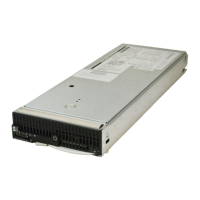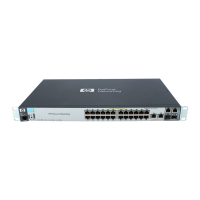442 Fabric OS Administrator’s Guide
53-1002745-02
Admin Domain management for physical fabric administrators
17
Admin Domain compatibility, availability, and merging
Admin Domains maintain continuity of service for Fabric OS features and operate in mixed-release
Fabric OS environments. High availability is supported with some backward compatibility.
When an E_Port comes online, the adjacent switches merge their AD databases. The receiving
switch accepts an AD database from the neighboring switch only if the local AD database is empty
or if the new AD database exactly matches both the defined and effective configurations of the
local AD database. If the AD database merge fails, the E_Port is segmented with an “AD conflict”
error code.
Admin Domain management for physical fabric administrators
This section is for physical fabric administrators who are managing Admin Domains.
The ad command follows a batched-transaction model, which means that changes to the Admin
Domain configuration occur in the transaction buffer.
An Admin Domain configuration can exist in several places:
• Effective configuration — The Admin Domain configuration that is currently in effect.
• Defined configuration — The Admin Domain configuration that is saved in flash memory. There
might be differences between the effective configuration and the defined configuration.
• Transaction buffer — The Admin Domain configuration that is in the current transaction buffer
and has not yet been saved or canceled.
How you end the transaction determines the disposition of the Admin Domain configuration in the
transaction buffer. The following commands end the Admin Domain transaction:
You can enter the ad
--transshow command at any time to display the ID of the current Admin
Domain transaction.
ad
--save Saves the changes in the transaction buffer to the defined configuration in
persistent storage and propagates the defined configuration to all switches
in the fabric. Note that for delete and clear operations, if one or more of the
deleted Admin Domains are in the effective configuration, you cannot use
--save, but must use --apply instead.
ad
--apply Saves the changes to the defined configuration in persistent storage and
enforces the defined configuration on all switches in the fabric, replacing the
effective configuration.
ad
--transabort Aborts the transaction and clears the transaction buffer. The effective and
defined configurations remain unchanged.
